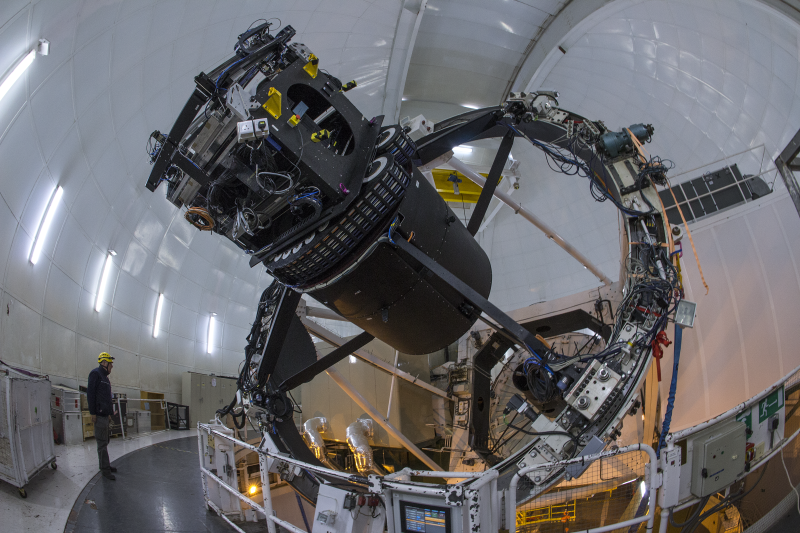WEAVE-LOFAR
Deputy Science Team Lead
The WHT Enhanced Area Velocity Explorer (WEAVE) is a next generation multi-object spectrograph (~1000 fibres) currently undergoing commissioning on the William Herschel Telescope (WHT). Once commissioned, WEAVE will undertake a suite of surveys covering a broad range of scientific topics. Amongst these, the WEAVE-LOFAR survey (PI: Dan Smith, U.Hertfordshire), will provide over 1 million high resolution optical spectra for sources detected by the LOFAR Two-Metre Sky Surveys (LoTSS).

Survey Goals
Given the scale of the survey, the WEAVE-LOFAR science case is extremely broad, covering a range of questions across galaxy evolution and cosmology. A number of the research themes most closely related to my research are:
- The history of accretion and AGN driven feedback: WEAVE spectra will provide precise distance information, enable accurate source classifications and provide measurements of fundamental physical properties (e.g. SMBH masses) for samples of radio AGN more than \(100\times\) larger than previously available. The spectral resolution offered by WEAVE will also open up new opportunities for studying the details of stellar and AGN feedback.
- Probing the epoch of re-ionization (EoR): The enormous samples now available thanks to WEAVE means that WEAVE-LOFAR will be able to detect some of the rarest and most extreme sources in the Universe. A key example will be the discovery of \(z > 6\) radio galaxies suitable for 21cm absorption experiments, that could open a new window for studying the process of cosmic re-ionization.
- Cosmic star formation history: The sensitivity of the LoTSS Deep Fields combined with LOFAR’s good spatial resolution (compared to previous far-IR observations) provides a means of probing the cosmic evolution of star-formation free from the effects of dust obscuration. WEAVE-LOFAR spectroscopy will be critical to disentangling the contributions of AGN and SF activity to the observed radio continuum emission.
The combination of area and sensitivity of LoTSS with the unprecedented complementary optical spectra from WL present a unique and truly transformational new dataset with which to study SMBH and galaxy formation.

Survey Plan
WEAVE-LOFAR is structured as a three tiered survey following the typical “wedding cake” strategy, allowing us to efficiently sample the full range of redshift and luminosity space probed by LoTSS. All targets will be selected purely on the basis of their LoTSS radio continuum flux density, \(S_{\nu, \text{144 MHz}}\), with the three tiers currently defined as:
- WIDE: \(S_{\nu, \text{144 MHz}} > 8\,\text{mJy}\) - Covering \(\gtrsim 6\,500 \text{deg}^2\) over the northern extragalactic sky (both North and South Galactic Caps).
- MID: \(S_{\nu, \text{144 MHz}} > 0.8\,\text{mJy}\) - Covering \(\sim 650-850 \text{deg}^2\), located primarily in the HETDEX North field (1200+55), the H-ATLAS NGP (1300+29) and regions of the South Galactic Cap expected to be observed by the Euclid mission.
- DEEP: \(S_{\nu, \text{144 MHz}} > 50\,\mu\text{Jy}\) - Covering a few of \(10\text{s\,deg}^2\) in the best areas of multi-wavelength coverage in the northern sky, including the Lockman Hole (1050+57), ELAIS-N1 (1610+54), Boötes (1430+34) and NEP (Euclid Deep Field North; 1800+66) fields.
Further details on both the scientific goals and planned observations can be found in Smith, D et al. (2016), the forthcoming WEAVE-LOFAR Survey definition paper (Smith et al., in prep.) or through emailing myself or Dan Smith (U. Hertfordshire).